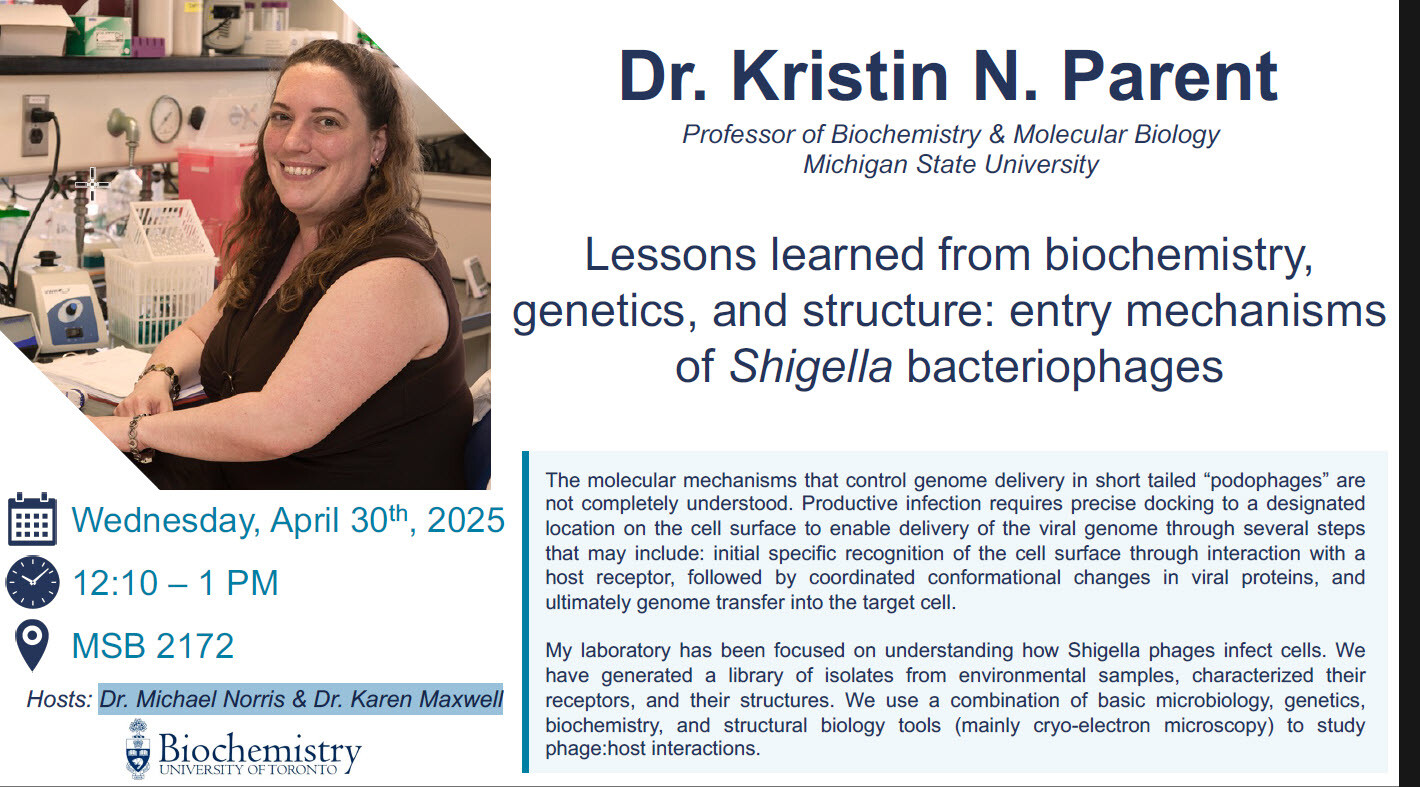Main Second Level Navigation
Lessons learned from biochemistry, genetics, and structure: entry mechanisms of Shigella bacteriophages
The molecular mechanisms that control genome delivery in short tailed “podophages” are not completely understood. Productive infection requires precise docking to a designated location on the cell surface to enable delivery of the viral genome through several steps that may include: initial specific recognition of the cell surface through interaction with a host receptor, followed by coordinated conformational changes in viral proteins, and ultimately genome transfer into the target cell.
My laboratory has been focused on understanding how Shigella phages infect cells. We have generated a library of isolates from environmental samples, characterized their receptors, and their structures. We use a combination of basic microbiology, genetics, biochemistry, and structural biology tools (mainly cryo-electron microscopy) to study phage:host interactions.
